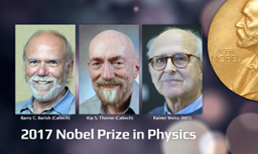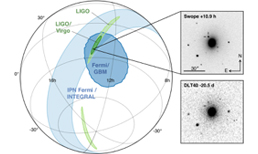The International Society on General Relativity and Gravitation (ISGRG) is an international learned society and was established in 1971 as the successor to the International Committee on General Relativity and Gravitation. It joined IUPAP As Affiliated Commission 2 (AC2) in 1975.
IUPAP sponsors the triennial conferences of ISGRG (as well as other major meetings in the field) and, since 2013, has supported the annual IUPAP General Relativity and Gravitation Young Scientist Prize. The 22nd International Conference on General Relativity and Gravitation will be held jointly with the 13th Eduardo Amaldi Meeting on Gravitational Waves in Valencia, Spain, in July 2019.
In 1975, the field of Gravitational Physics was very different from today. Most of the practitioners were theorists working on classical and quantum gravity and their applications to relativistic astrophysics. These efforts led to enormous progress in the field, and classical and quantum gravity continue to be major research areas. Prescient experimentalists, led by J. Weber in the 1960s, attempted to detect the gravitational waves predicted by Einstein in 1916. Although early claims of detections were not confirmed, the quest continued and soon became dominated by interferometric detectors. Observational confirmation of Einstein’s prediction was obtained by monitoring the orbital decay of the first detected binary pulsar, for which R. Hulse and J. Taylor received the 1993 Nobel Prize. The orbital decay precisely matched the energy loss due to gravitational waves, as predicted by General Relativity. This success helped to motivate the construction of LIGO in the US and Virgo in Italy, in the hope to achieve direct detection of gravitational waves. In September 2015, the first detection of gravitational waves was achieved, with waves originating from the merger of a binary black hole. The never-before detected gravitational waves from a never-before observed source, binary black holes, was a milestone event not just for gravitational physics, but indeed for the entire physics enterprise. In 2017, the Nobel Prize in Physics was awarded to R. Weiss, B. Barish, and K. Thorne for their seminal roles in the success of LIGO. In August 2017, an upgraded Virgo joined LIGO in the search for gravitational waves, and they soon detected a strong signal from the merger of a nearby binary neutron star. Unlike a black-hole merger, which emits only gravitational waves, a neutron-star merger was expected to have an electromagnetic counterpart. This prediction was spectacularly realized with the nearly simultaneous observation of a gamma-ray burst and, thanks to the source localization made possible by the three gravitational wave detectors, the identification of an optical counterpart, a kilonova, in the nearby galaxy NGC 4993. The kilonova was later observed in the X-ray, infrared, ultraviolet, and radio bands.






